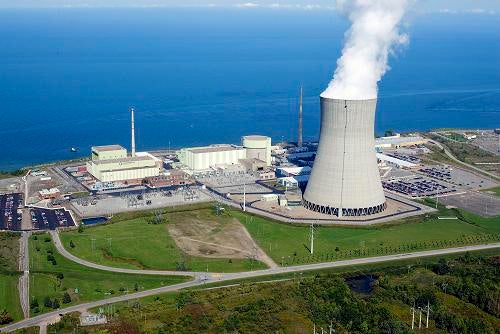Hurricane Sandy: Nuclear reactors shut down

Your support helps us to tell the story
From reproductive rights to climate change to Big Tech, The Independent is on the ground when the story is developing. Whether it's investigating the financials of Elon Musk's pro-Trump PAC or producing our latest documentary, 'The A Word', which shines a light on the American women fighting for reproductive rights, we know how important it is to parse out the facts from the messaging.
At such a critical moment in US history, we need reporters on the ground. Your donation allows us to keep sending journalists to speak to both sides of the story.
The Independent is trusted by Americans across the entire political spectrum. And unlike many other quality news outlets, we choose not to lock Americans out of our reporting and analysis with paywalls. We believe quality journalism should be available to everyone, paid for by those who can afford it.
Your support makes all the difference.Three nuclear power reactors were shut down because of electricity issues during Hurricane Sandy, while a fourth plant, Oyster Creek in New Jersey, remains in "alert" mode because of high water levels in its water intake structure, the Nuclear Regulatory Commission said Tuesday.
All three reactors shut down safely, the NRC said, but the incidents are likely to come under close scrutiny given the series of electrical problems that led to the Fukushima Daiichi nuclear complex disaster in Japan in 2011.
"Sandy should be a wake-up call for the NRC and the industry to accelerate efforts launched after Fukushima to strengthen protection against natural disasters so that they will be better prepared to cope with the unexpected," Edwin Lyman, senior scientist at the Union of Concerned Scientists, said in an email.
The three reactors to experience trips, or shutdowns, during the storm this week were Nine Mile Point 1 in Scriba, N.Y., Indian Point 3 in Buchanan, N.Y.; and Salem Unit 1 in Hancocks Bridge, N.J., the NRC said.
Salem Unit 1, which sits along the Delaware River, was manually shut down by plant operators at about 1:10 a.m. Tuesday because four of the plant's six circulating-water pumps were not working because of high water levels and debris in the river, said the plant owner, New Jersey-based PSEG. The circulating-water system is used to cool down steam generated by the reactor; it is a closed system that does not come into contact with any radioactivity, the NRC said.
Nine Mile Point 1 shut down automatically at about 9 p.m. Monday because of an electrical disruption on power lines used to send power to the grid.
Meanwhile, Nine Mile Point 2 experienced a loss of one of two incoming off-site power lines as a result of the disruption. One of the plant's emergency diesel generators kicked in, and Nine Mile Point 2 remained at full power.
Indian Point 3 automatically shut down at about 10:40 p.m. Monday in response to electrical grid disturbances caused by the storm. "All safety systems responded as designed and the unit was placed in a safe shutdown condition," the NRC said.
At Oyster Creek, the alert was declared at approximately 8:45 p.m., the NRC said, because the rising water levels from a rising tide, wind and storm surge. The high water level could affect the plant's intake canal, from which water is pumped to cool the plant. But Oyster Creek had already been shut down for a refueling and maintenance outage prior to the storm, and the reactor remains out of service.
"We're lucky this time that there was plenty of warning about Sandy's destructive potential and that Oyster Creek — an old reactor very similar to Fukushima Daiichi Unit 1 — was already offline," Lyman said. "Too many plants today are vulnerable to events such as dam failures that could cause a rapid and severe flooding event with much less warning than Sandy provided, similar to what occurred at Fukushima."
At Fukushima, reactors lost power from the grid after a tsunami hit the area and backup diesel generators failed because of the flooding.
"After Fukushima, the NRC compiled a table of the flood protection levels at all U.S. nuclear plants," Lyman said. "Many plants had little or no additional protection over the maximum historical flooding levels. This leaves little margin for error in the event that a plant experiences a more severe storm than its operators had anticipated."
Join our commenting forum
Join thought-provoking conversations, follow other Independent readers and see their replies
Comments